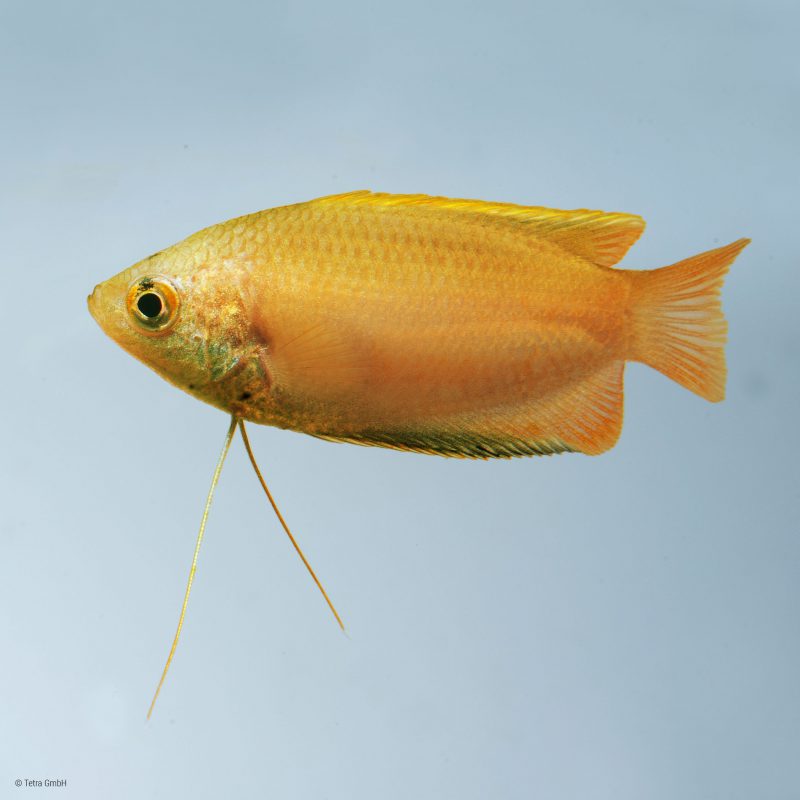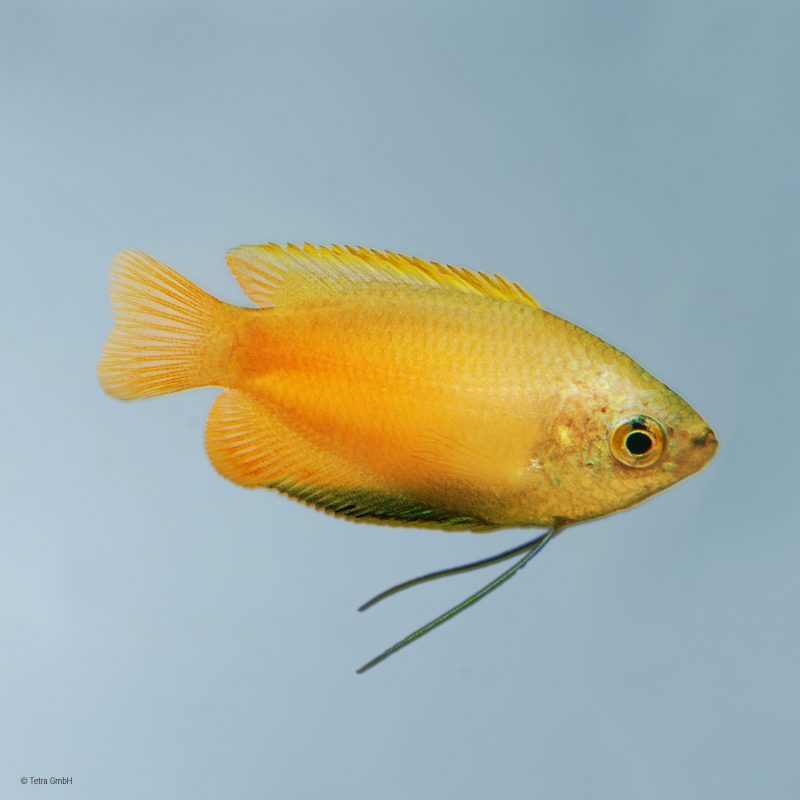The Honey Gourami (Trichogaster chuna) owes its common name to the bright honey-yellow to orange colouring of the male fish during the mating season, whereas female honey gouramis are light-yellow to brown in colour.
Trichogaster chuna originally come from North-East India and Bangladesh. One of their main discovery sites is the Ghaghara, a tributary of the famous Ganges River, but they can also be found in stagnant bodies of water, such as swamps. Trichogaster chuna have a life expectancy of around 4 years and typically grow to up to 5 centimetres in length. Previously, the scientific name for honey gouramis was “Colisa chuna”, but according to more recent classifications, the honey gourami has since been attributed to the Trichogaster genus.
As honey gouramis are labyrinth fish they also breathe atmospheric oxygen. This phenomenon enables the fish to adapt to their natural environment. As such, labyrinth fish can use the extra oxygen in the air to survive, even when there is a lack of oxygen in the water.
Aquarium and water
The aquarium should have a volume of at least 54 litres. This corresponds to the Tetra Starter Line LED aquarium with the following dimensions: 60 x 30 x 30 cm. The water temperature should meet the natural needs of honey gouramis. We recommend tropical temperatures of 22 to 28°C. Ideally, the water should be slightly acidic to slightly alkaline, (pH value: approx. 6.5-8.5) and medium-hard (GH value: approx. 8-15°dH), but Trichogaster chuna can also be kept in slightly softer or harder water.

Honey Gourami (Trichogaster chuna)
Keeping conditions
Trichogaster chuna should be kept in pairs, bearing in mind that the males chase the females around during the mating season. The aquarium should therefore offer enough retreats and hiding places for the females. Honey gouramis are peaceful fish that are ideal for keeping in community tanks. They particularly like sharing the aquarium with smaller and quiet fish, such as catfish, and should not be kept together with rough fish or “fin pickers” such as Sumatra barbs. Gouramis tend to prefer the upper regions of the aquarium.
Planting and decoration
The aquarium should contain a large number of plants. Dense vegetation around the edges of the tank offers places for female honey gouramis to hide when beset by males during the mating season.
Like many other labyrinth fish, honey gouramis are bubble nest builders. During the breeding season, the males build bubble nests made up of little air bubbles coated in saliva. They attach these “nests” to floating plants. If you wish to observe this phenomenon, you need to keep a pair of honey gouramis in a largish aquarium, where they are undisturbed.
Diet
Trichogaster chuna are omnivores, which means you can feed them various foods such as TetraMin or Tetra Menu. However, you should always make sure that the food is fine-grained and not too big. To enhance their colour vibrancy, you can also feed honey gouramis Tetra Rubin. The colour-enhancing effect of Tetra Rubin can be seen in just two weeks.

